Mandatory signs
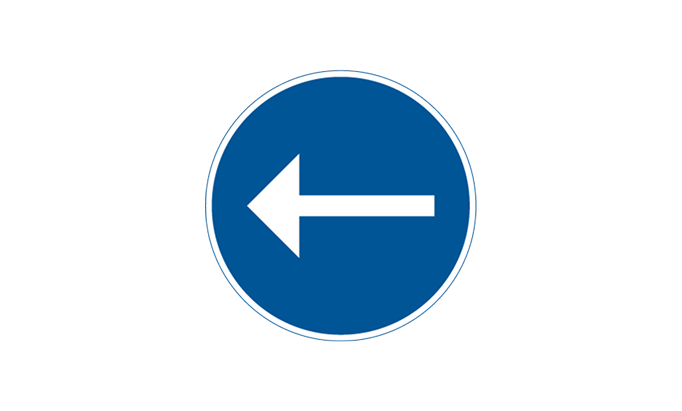
D1 Follow the given direction
The sign indicates that vehicles are only allowed to travel in the direction(s) shown by the arrow(s). The arrow(s) are designed according to the specific conditions at the location to clearly indicate the permitted direction(s) of travel.

D2 Keep left / keep right
This sign indicates that vehicles must pass the sign in the direction shown by the arrow(s). If two arrows are displayed, vehicles can pass on either side. The sign designates the correct lane to use, often to avoid hazardous situations.
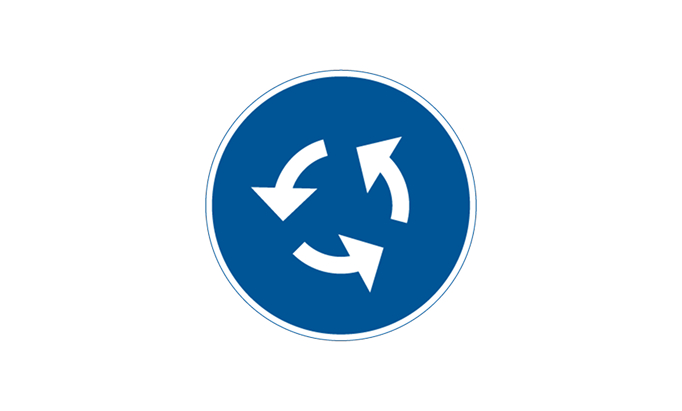
D3 Roundabout
This sign is used at a roundabout, indicating that vehicles may only travel in the direction of the arrows. Parking is prohibited within the roundabout. For optimal safety and traffic flow, drivers should choose their lane in advance and position their vehicle appropriately before entering the roundabout.
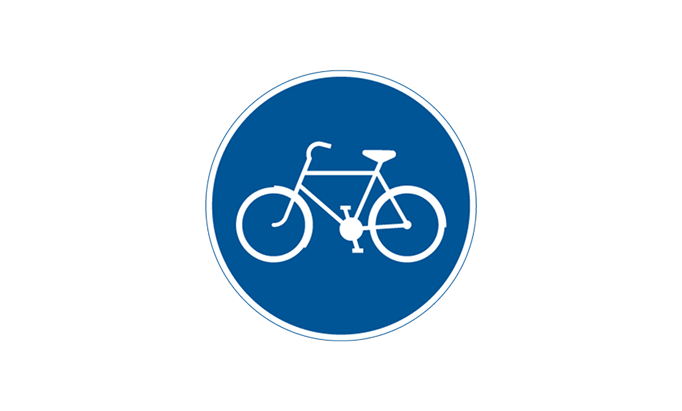
D4 Bicycle path
This sign designates a path specifically intended for bicycles and class II mopeds. Other vehicles, including class I mopeds, are only allowed to use the path if explicitly indicated by an additional panel.
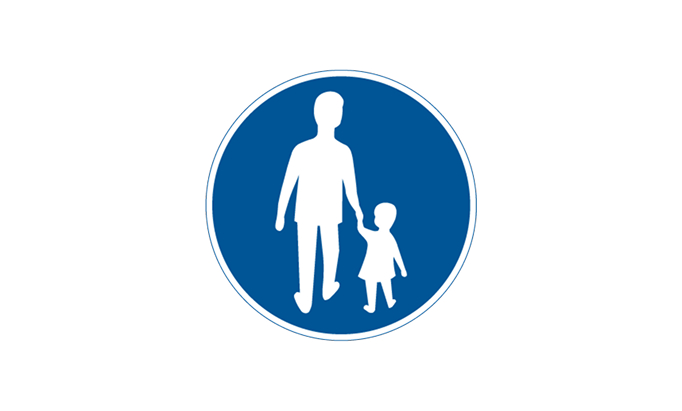
D5 Footpath
This sign indicates a path exclusively for pedestrians. Other traffic is not permitted on the path unless otherwise indicated by an additional panel.

D6 Shared path for pedestrians and cyclists
The sign indicates a shared path for both pedestrians and cyclists. If class II mopeds are not allowed, this will be stated on an additional panel.
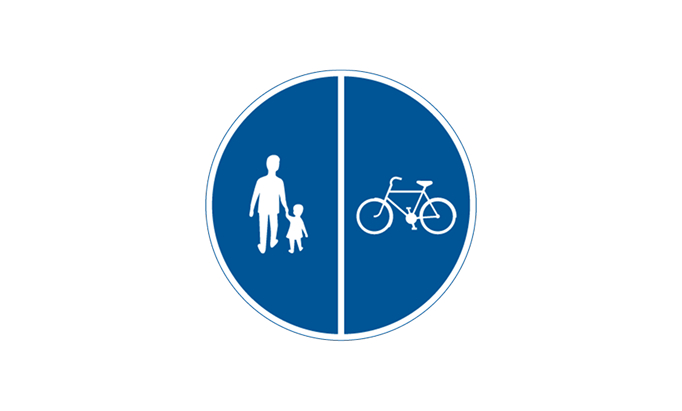
D7 Paths for pedestrians and cyclists
This sign shows distinct paths for pedestrians and cyclists, typically separated by markings or a dividing strip. The placement of symbols on the sign indicates which part of the path is for pedestrians and which is for cyclists. If class II mopeds are prohibited, this will be noted on an additional panel.
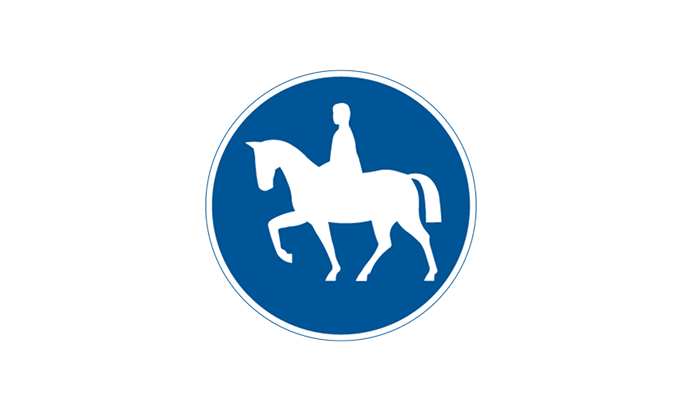
D8 Path for horse riding
This sign designates a path specifically for horse riding. Pedestrian traffic is also permitted, but bicycles and other vehicles are not, unless otherwise indicated. Such signs are common near riding schools and areas with horse traffic.
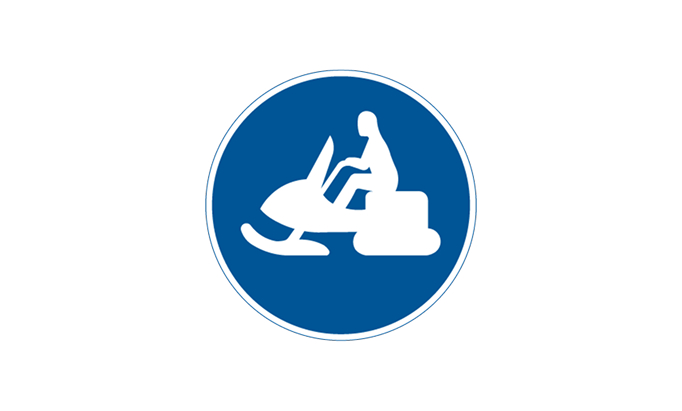
D9 Mandatory route for off-road motor vehicles and off-road trailers
This sign marks a route designated for off-road vehicles. Pedestrians and skiers are also allowed to use the route and have priority over drivers of vehicles. Vehicles must keep to the right on the route, and the right-hand rule applies at intersections.
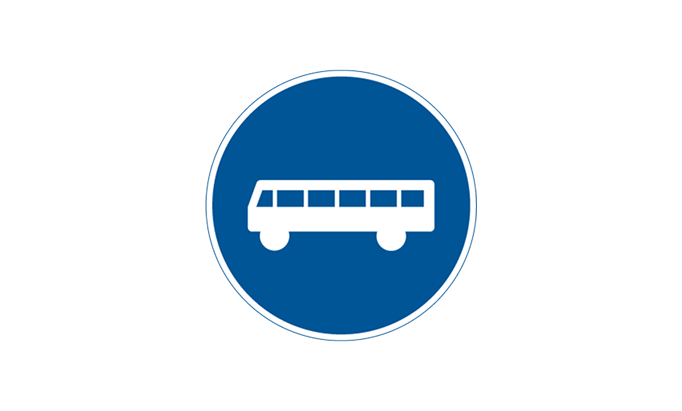
D10 Reserved lane for public transport vehicles
The sign indicates a lane reserved for public transport vehicles (such as buses), bicycles, and class II mopeds. Parking is prohibited within the lane, often referred to as the “bus lane.” Other vehicles may only use the lane if explicitly permitted by an additional panel.

D11 End of reserved lane for public transport vehicles
This sign indicates the end of a previously designated reserved lane, path, road, or route. The symbol on the sign corresponds to the one on the initial mandatory sign, showing that the earlier rules no longer apply.
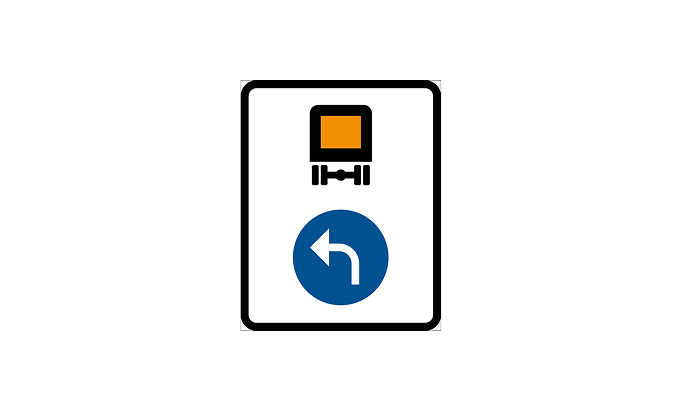
D12 Mandatory direction for vehicles carrying dangerous goods
This sign specifies a mandatory direction for vehicles transporting dangerous goods that require an orange warning plate. The letter on the sign indicates that the rules apply to vehicles restricted from tunnels of a specific category matching the letter. Drivers should always be aware of tunnel categories and plan their route accordingly.